64- Nea Church |
||||||
| Go to the Arch of Titus on this page | ||||||
The Nea church survives to a height of 26 feet, with walls that are over 20 feet thick. About 45 of the original 375 feet of wall still remain. |
||||||
Photo of the outside the southeast corner of the Nea Church, which contains the southern apse of the church on the inside. The current city wall runs on top of the Nea Church, as can be seen in this photo. |
||||||
There are six huge vaulted halls over 30 feet high under the remains of this church. Charles Warren entered and drew these vaults in 1867. An inscription has been found that reads:
|
||||||
Inside the Nea Church. This photo shows the southern apse in the southeast corner. |
||||||
 A diagram of the Nea Church. The three or four portions of remains that are visible today are marked with angled, parallel lines. |
||||||
 An idea of how the Nea Church would have looked. |
||||||
This photo would be the back right corner in the photo above. The modern city wall runs right over the top of this southeast corner of the Nea Church |
||||||
The Arch of Titus was built in Rome in 82 AD to commemorate the Roman victory over the Jews. It is clear from the images on the Arch that the Golden Candle Stand, the Table of Showbread, and trumpets from the Temple were carried into Rome. Josephus himself testifies to this fact in his book, Wars of the Jews, book 7, chapter 5:
|
||||||
The Temple treasures were kept in Rome until Rome fell to the Vandals. The Vandals were in turn defeated by the Byzantine Empire, which recovered the Temple
Forty-nine years after the death of Justinian and seventy years after the dedication of the Nea Church the Persians captured Jerusalem with help from their After the fall of Jerusalem to the Persians in 614 we lose track of the Temple treasures. What happened to them? Were the Jews silent about their re-discovered Temple treasure? Were the Temple treasures carried away by the Persians? Maybe melted down? Or, were they never located nor removed from their hidden compartments in the lower regions of the Nea Church? Are they still there today? By 617, only three years after victory, the Persians betrayed their Jewish allies by expelling them from Jerusalem and returning Jerusalem to the Christian control of the Byzantine Empire. (Note that the Persian invasion of 614 was not associated with Islam, since it was not until 622 that Mohammed began to spread his Although plundered and burnt, we know that the remains of the Nea Church continued to stand for several centuries, since it was described by pilgrim writers as still in use in 634 and 808. In fact, in 870 a monk stayed in what was called Charlemagne’s rebuilt Nea Church. |
||||||
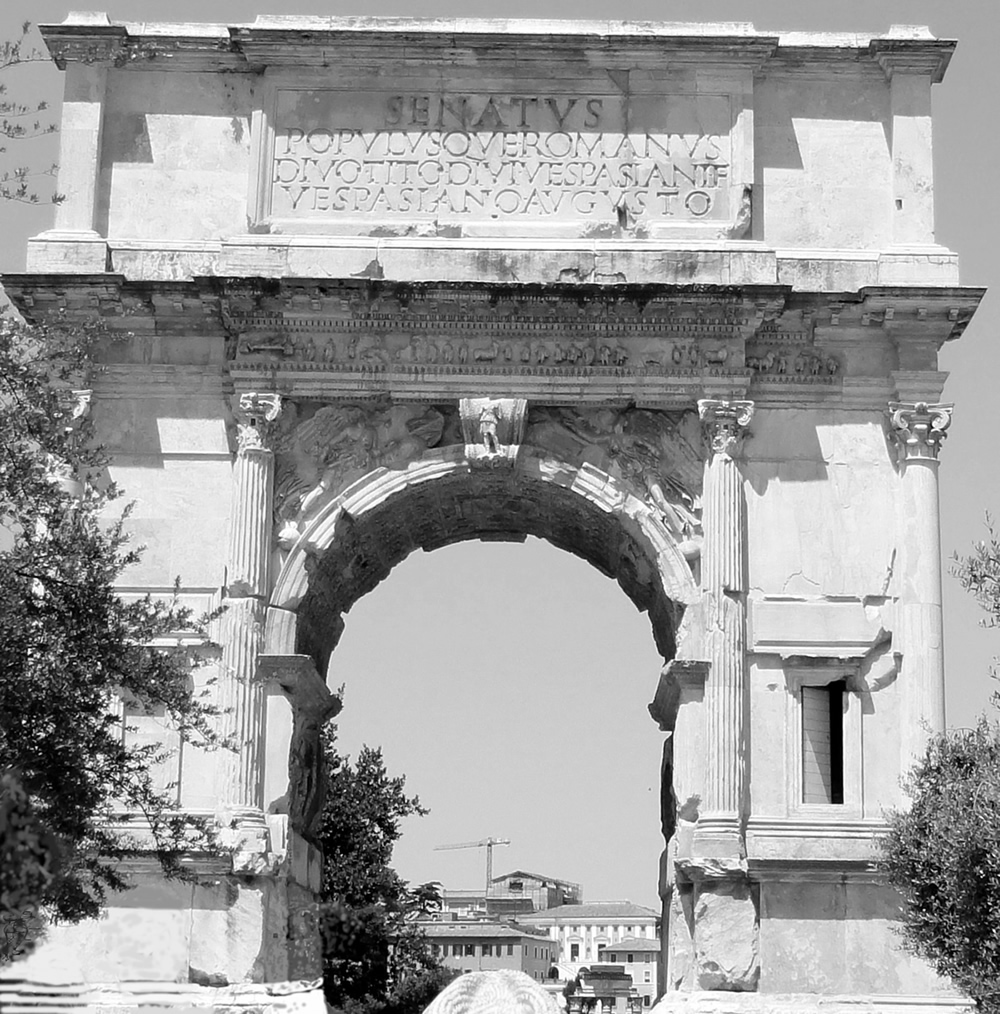 The Arch of Titus, located in Rome southeast of the Roman Forum, commemorates Titus' victory over the Jews and the end of the 66-70 AD Jewish revolt. This triumphal arch was built in 82 AD. The modern importance of this arch is in the engraving found on the inside which shows the Temple treasures being carried into Rome by Roman soldiers after their destruction of the Temple and the city of Jerusalem in 70 AD. The image clearly shows the golden Table of Showbread, the golden Candle Stand, and the trumpets used by the priests. Many other items from the Temple can also be assumed to have made it to Rome. It seems these Temple treasures were taken from Rome by the Vandals but recaptured by the Romans of the Byzantine Empire and taken to Constantinople. The Temple treasures portrayed on the Arch of Titus may have ended up stored in the Nea Church by Justinian. (Photo by Bill Wallander) |
||||||
This translates as:
Titus’ full name is Titus Vespasianus Augustus. This monument was credited to the Senate and People of Rome and was constructed shortly after Titus’ death at |
||||||
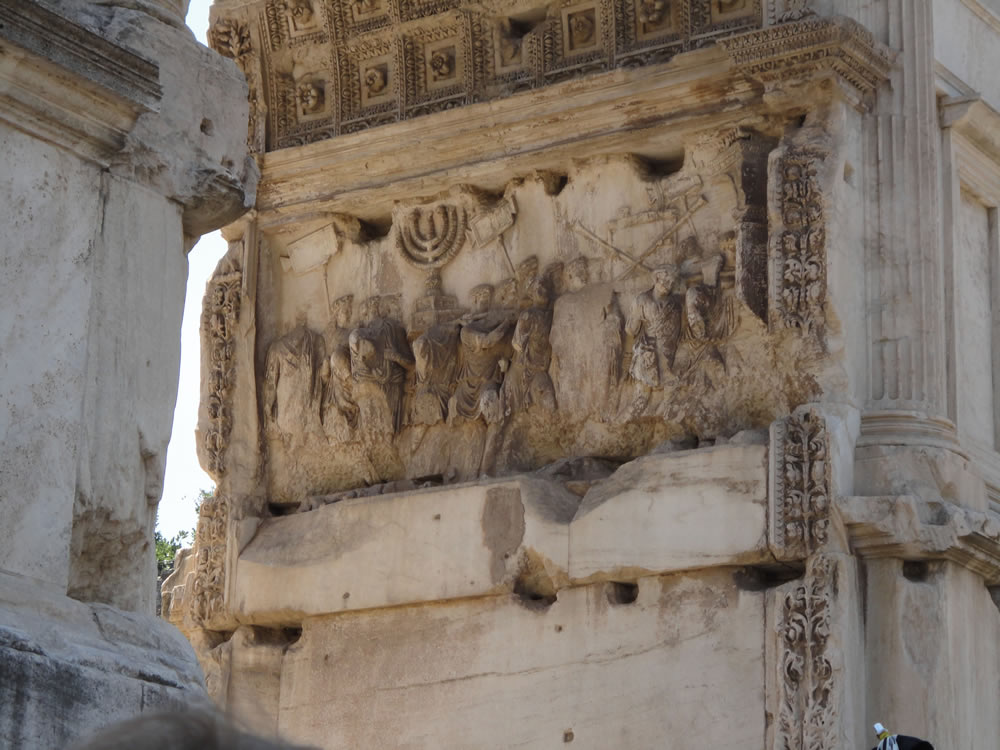 Images from the inside of the Arch of Titus showing the Roman triumphal procession into Rome with the Temple Treasures. (Photo by Bill Wallander) |
||||||
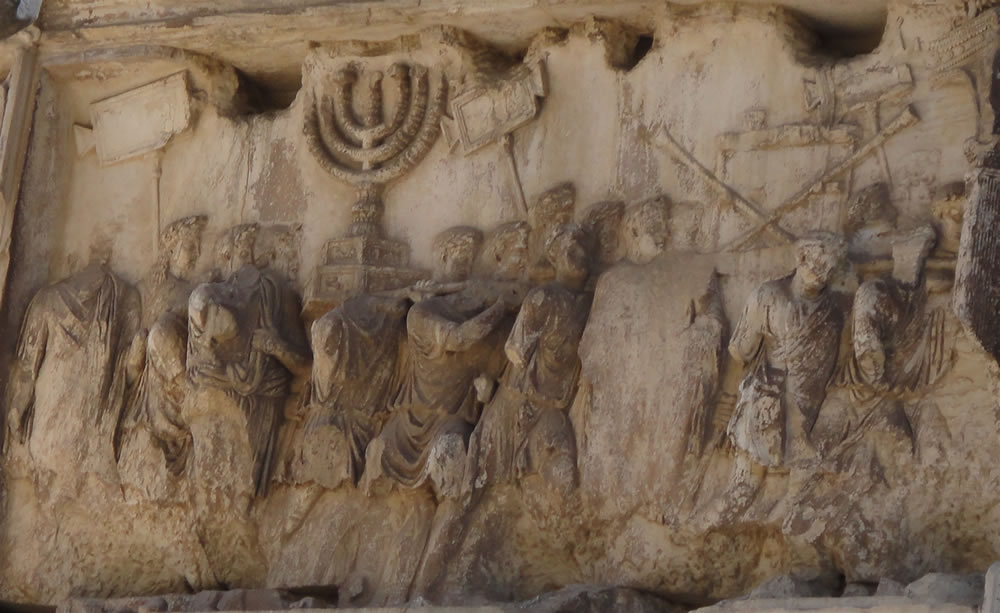 A close up of the triumphal procession. Notice the Candle Stand and the two trumpets which form an “X” over the Table of Showbread as the Romans carry them into Rome. (Photo by Bill Wallander) |
||||||
 The Golden Lamp Stand from Herod's Temple of 70 AD. |
||||||
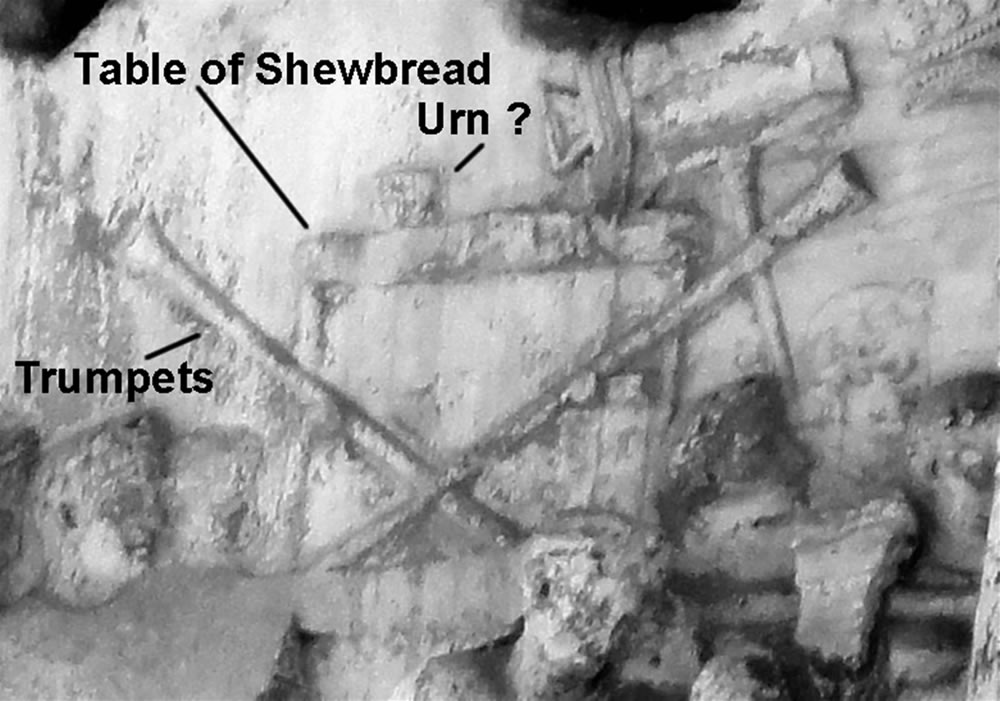 |
||||||
|
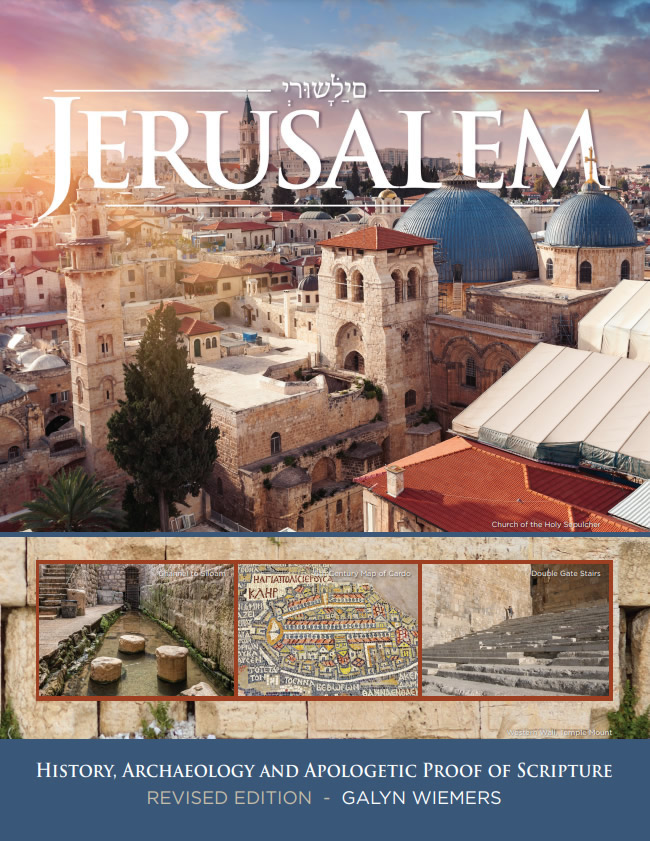 |
UPDATED! 2022 - Open this link |
JERUSALEM: HISTORY, ARCHAEOLOGY AND Download a FREE online .pdf of "Jerusalem" HERE (click on the book cover to download the book as a .pdf ) |
|
|
|
|
|